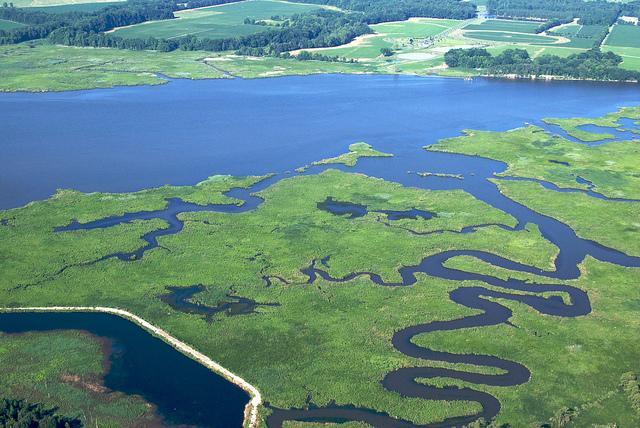Watersheds Research
 Natural water resources, including bodies of water as well as their supporting watersheds, provide critical economic and social benefits to our society. The beneficial uses of many watersheds and water bodies are currently threatened by numerous factors including high levels of nutrients and sediments, habitat alteration, introduction of invasive species, toxic pollutants and land-use changes.
Natural water resources, including bodies of water as well as their supporting watersheds, provide critical economic and social benefits to our society. The beneficial uses of many watersheds and water bodies are currently threatened by numerous factors including high levels of nutrients and sediments, habitat alteration, introduction of invasive species, toxic pollutants and land-use changes.
The protection of water systems requires a detailed understanding of how human activities affect such systems, and how the structure and function of aquatic ecosystems changes in response to those effects.
EPA works to sustain and restore natural water resources by viewing them as complex systems. In order to help sustain our precious water resources, EPA research is underway to
- assess the condition of aquatic ecosystems;
- obtain a complete understanding of watershed processes;
- quantify the social, economic and environmental costs of water quality degradation;
- establish new approaches to identify, assess and prioritize contaminant risks;
- develop new approaches to minimize the impacts of these contaminants on water resources; and
- consider the impacts of climate change, increased population and changing human demographics on watersheds.
Related Research
- Human Dimensions of Water Quality Research
- Chemical and Microbial Risk Research
- Research to Support and Implement Recreational Water Quality
- Bristol Bay Watershed Assessment
- Ecological Exposure Research - Water
- Sustainable Watersheds and Nutrient Pollution
- East Fork Watershed Research and Cooperative
- Village Blue Real-Time Water Quality Monitoring in the Baltimore Harbor
- Water and Energy (e.g., hydraulic fracturing, mountaintop mining, uranium recovery, biofuels)
Models, Tools, and Approaches
- Virtual Beach Model
- Rapid Benefit Indicators Approach (RBI Approach)
- Causal Analysis/Diagnosis Decision Information System (CADDIS)
- Coastal and Marine Ecological Classification Standard
- Freshwater Biological Traits Database (Traits)
- Lake-Catchment Dataset (LakeCat)
- Stream-Catchment Dataset (LakeCat)
- Watershed Health Assessment Tools Investigating Fisheries (WHATIF)
- Watershed Management Optimization Support Tool (WMOST)
- Visualizing Ecosystem Land Management Assessments (VELMA) Model
-
Concepts and Approaches for the Bioassessment of Non-Wadeable Streams and Rivers
